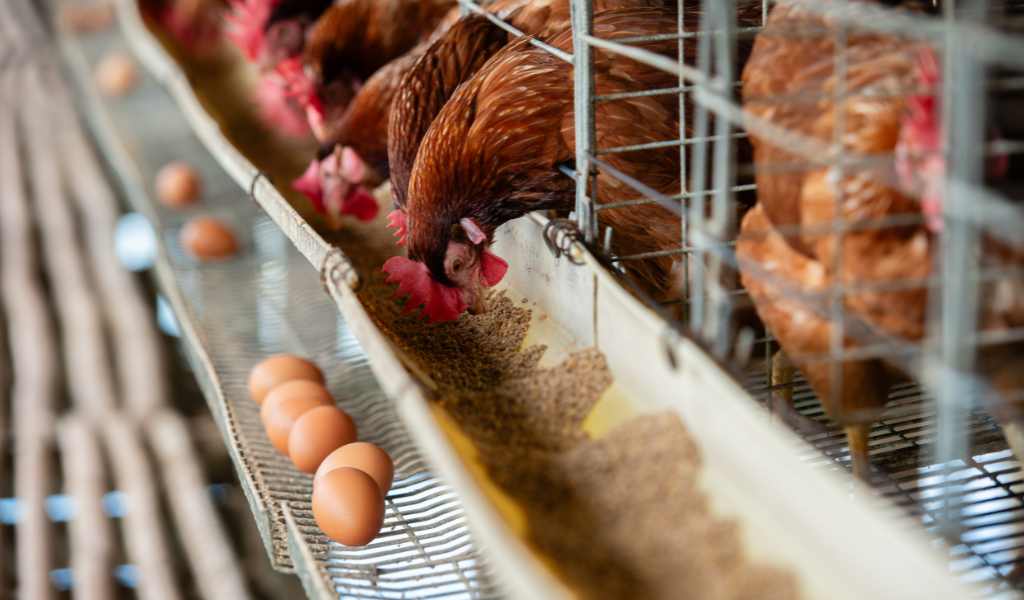Avian Influenza outbreaks have been making headlines over the last few months. This time, the news does not come from the so-called “developing world” where poultry production systems are informal and less organised. It comes from the US, and the UK, and not just from chicken farms but also from beef farms. Does this mean that the next global pandemic will originate from the so-called “developed world”?

The myth: “the bigger the farm, the better”
When it comes to safe, efficient and productive poultry farming, policy makers, veterinary practitioners, and epidemiologists often suggest that large-scale farms are better. Across low- and middle-income countries (LMICs), chicken production systems have rapidly intensified in the last few decades. Much of this intensification has happened through increased number of farms as well as expanding the scale of these farms. Common farming practices in LMICs are still small-scale compared to what we see in industrialised countries – e.g. US, UK, EU, Japan, etc. – and those who work in infectious diseases control are sure that larger farms have better biosecurity and are less vulnerable to disease outbreaks.
Learn more about the Food Equity Centre
But the recent development of widespread avian influenza outbreaks in the US and UK shows that bigger farms are not always better at preventing and controlling diseases. Both US and UK have large-scale, bio-secure, and industrial farms that are meant to protect people and animals from infectious diseases. The vulnerability in these industrial systems has led to a huge increase in egg prices in the US and Japan, leading to speculation that higher egg prices may have political consequences for the Trump administration.
Bigger farms are not immune to disease outbreak because large-scale farms are vulnerable to different kinds of risks that we see in small- and medium-scale farms in LMICs. Larger farms are certainly better protected from disease incursion because they employ better biosecurity and infrastructure to protect their animals. They invest in this infrastructure because they make a huge investment – and therefore take a huge risk – in setting up their large-scale farms, and also because the measures to protect farms against diseases are mandated by the government.
However, the recent outbreaks have shown that these high biosecurity measures are insufficient – for instance, avian influenza is regularly detected in wild birds across the world. Therefore, farmers and farm workers can only do so much to protect themselves and chickens from wild birds, even with heightened biosecurity.
Whose health, and whose risks?
Different people face different kinds of risks depending on the production systems.
What is common across industrialised and intensifying livestock production systems is that consumers and the general public in High Income Countries (HICs) are relatively well protected and this is demonstrated by no human-to-human transmission. However, those who work closely with animals are at a higher risk of exposure – and therefore infection – from zoonotic diseases (those that are transmitted from animals to humans).
For instance, in the current US outbreak, farmers and farm workers with avian influenza. Farm workers – particularly those who work on poultry farms or in poultry processing factories – in the US tend to come from marginalised and precarious backgrounds (e.g. undocumented migrants), undertake dangerous and dirty work, and/or are on very low pay. Therefore, the risk of contracting avian influenza in industrial countries is more occupational. This highlights the inequity in our food systems where the most vulnerable people to health risks are also those who are paid the least.
In intensifying production systems common across LMICs, farms as well as retail markets can be a potential hotspot for zoonotic infection – i.e. chickens infecting humans. While birds-to-human infection is rare, if it happens, the mortality rate is estimated to be 52 percent. Therefore, production systems in LMICs pose a significant public health risk.
But there are economic risks of avian influenza. The rising egg prices is one such issue, affecting low-income households the most. On the production end, when chickens are affected by avian influenza, the costs to the producers can be enormous. Despite the difference in scale, farmers in HICs and LMICs equally are grappling with the risk that they do not have enough capital to re-start livestock farming after disease outbreaks (when they are required to cull their entire flock or herd).
In the case of the UK, farmers are squeezed between the costs associated with public health mandates set by the government and the farm-gate prices set by supermarkets. The nature of economic precarity is different across HICs and LMICs, but it is often producers who bear the costs and risks.
Towards equitable, and sustainable livestock farming?
What is the future of livestock farming, if large-scale, intensive farms are not the solution? This is the very question we address in our Zoonotic Influenza Preparedness (ZIP) project. Across Bangladesh, Vietnam and the UK, we learned that no system is perfect in preventing and controlling zoonotic diseases such as avian influenza. However, policy debates rarely question whether intensive systems are the solution for all contexts. In the case of Vietnam, for instance, public policies have focused on intensifying the livestock production and value chains without taking into account the realities and livelihoods of those who depend on livestock, or the biosecurity risks that remain in large-scale farms and food production.
The responses and preventive measures to potential pandemic threats need to take account of people’s wellbeing – both health and livelihoods – and be informed by those whose health and livelihoods are being affected. It seems impossible to eradicate diseases from any livestock production systems. Then, the focus should be on creating livestock production systems that achieve sustainability, health, resilience and equity, rather than eradicating public health risks whilst achieving efficiency.
